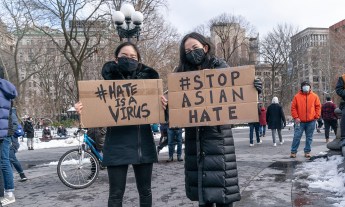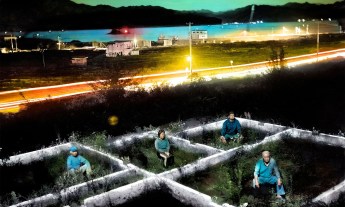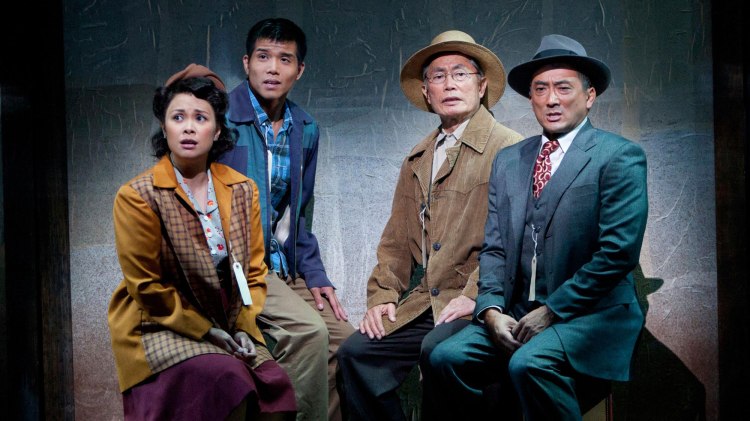
George Takei played Captain Sulu on Star Trek — the helmsman of the U.S.S. Enterprise who was good at everything from gymnastics to botany. In his TED Talk, Why I love a country that betrayed me, Takei gives some of his real-life backstory. Born in California in 1937, Takei recalls how, shortly after his fifth birthday, his parents woke him and his siblings up early one morning. With suitcases in hand, they boarded a train for Arkansas, where they spent four years in an internment camp for Japanese-Americans.
Takei’s story points to a dark moment in American history. In February 1942, President Franklin Roosevelt signed Executive Order 9066, clearing the way for an estimated 120,000 people of Japanese descent — about two-thirds of them American citizens — to be forced from their homes and “relocated” to camps, many of which didn’t close for years.
In U.S. history class, the period got a brief mention — and that was about it; the issue of how such a process smacks in the face of American ideals was not covered. Indeed, most of Americans have likely learned more about Japanese internment from popular culture than from textbooks. So below, some books, movies, songs and photo collections — some true, some truly fictional and some in the space of memoir — that offer more dimension to this often-forgotten reality. Included in the list, of course: Takei’s musical Allegiance, which riffs on his family’s internment experience.
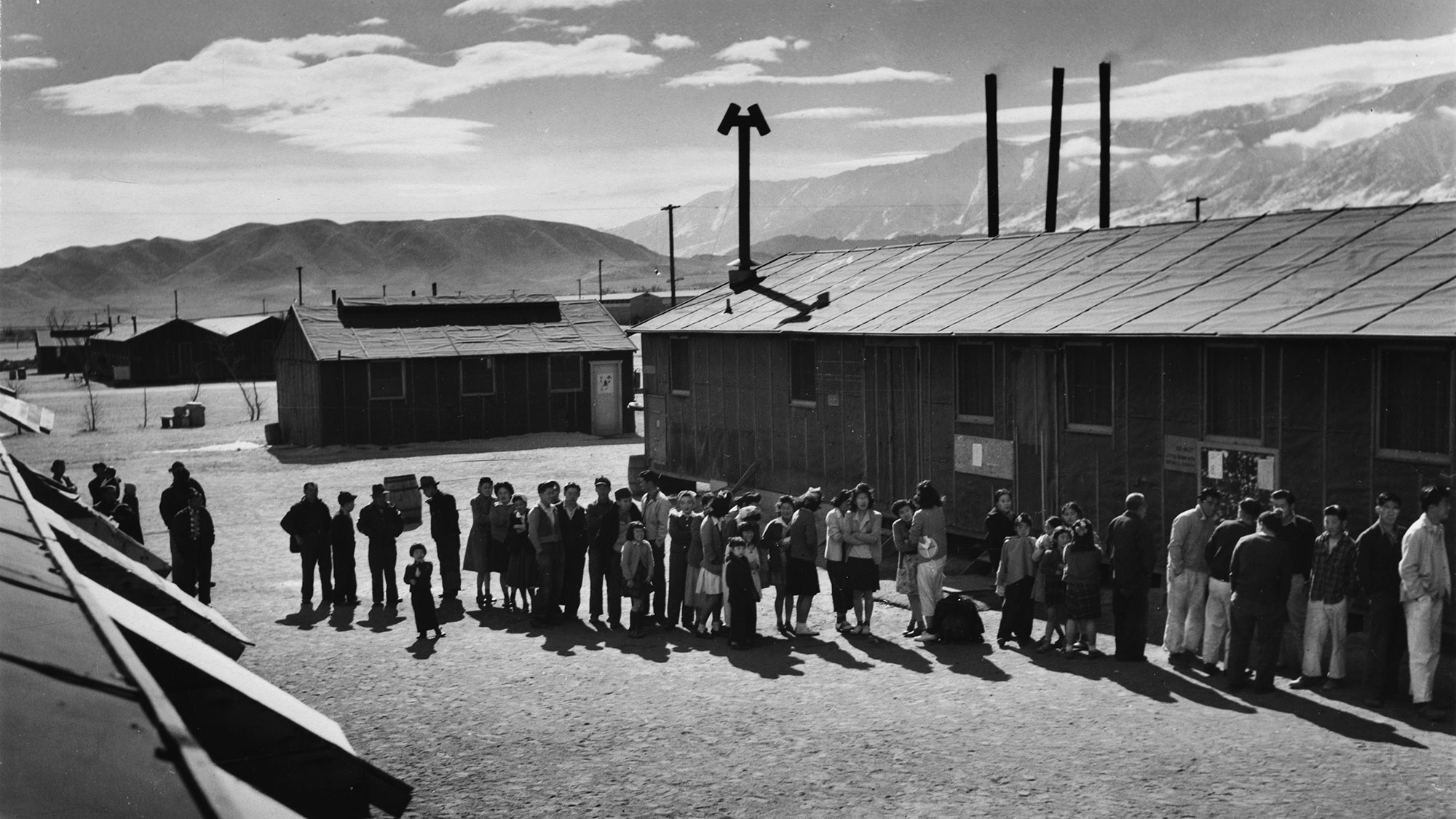
1. Look at: Ansel Adam’s Born Free and Equal.
When the U.S. government ordered the mass relocation of Japanese internees, several photographers realized that this was a historical moment that needed documentation. Ansel Adams visited Manzanar Internment Camp, north of Los Angeles, in 1943 — he was invited to create a photographic record of life there by his friend, the director of the camp. Adams’ images are sun-drenched, many with the Sierra Nevada mountains in the background, and they highlight everyday activities from fieldwork to baton practice to baseball games played on-site. These images became the source material for the “Manzanar” exhibit at the Museum of Modern Art in 1944 and were collected into a book published that same year, Born Free and Equal. Adams eventually donated the photos to the Library of Congress, explaining, “The purpose of my work was to show how these people, suffering under a great injustice, and loss of property, businesses and professions, had overcome the sense of defeat and dispair [sic] by building for themselves a vital community in an arid (but magnificent) environment.”
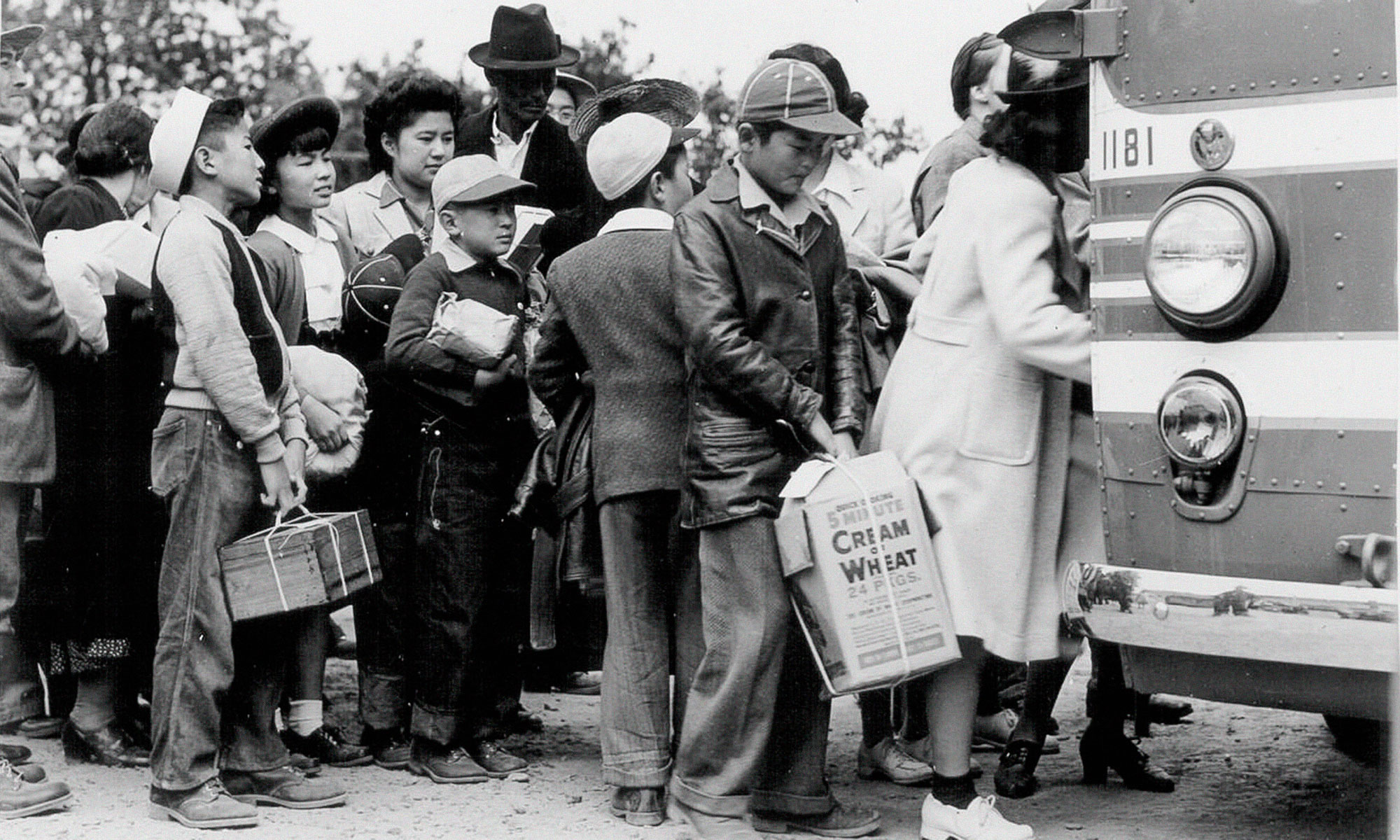
2. Also look at: Dorothea Lange’s Impounded.
Photographer Dorothea Lange also turned her lens on the residents of internment camps. She was hired by the War Relocation Authority and in all visited 21 camps — with strict orders not to photograph soldiers, wire fences or watchtowers. However, as The New York Times later reported, the majority of Lange’s images were impounded by the U.S. government and weren’t seen again until 2006. Why? Probably because her photographs were far less majestic than Adams’, and much more heartbreaking — the pictures feature living quarters that were clearly once horse stalls, a family with stunned expressions as the father fills out paperwork on a suitcase. W. W. Norton published these images in a book, Impounded, in 2008.
3. Read: Farewell to Manzanar.
Jeanne Wakatsuki Houston wrote this memoir with her husband, about her life as a child, when her father was arrested by the FBI following the bombing of Pearl Harbor and the rest of the family was sent to Manzanar. The book chronicles the dehumanizing conditions in which they lived, and the resulting breakdown of the family, and gives a look at how the camp became so similar to any other town that eventually internees were hesitant to leave. The book became an Emmy Award-winning, made-for-TV movie in 1976. Pop culture factoid: it co-starred Pat Morita, who’d go on to play Mr. Miyagi in The Karate Kid.
[youtube https://www.youtube.com/watch?v=SY6mC4I4SWk&w=560&h=315%5D
4. Read (or watch): Snow Falling on Cedars.
David Guterson’s lyrical novel from 1994 is in part a murder mystery and in part an interrupted love story. It centers on a Japanese woman, Hatsue, and the newspaper editor who loved her when they were teenagers, before her family was sent to an internment camp in California. The person accused of murder is Hatsue’s husband; the person killed was the man who sold his family’s land in their absence. While Snow Falling on Cedars is high drama, it gives fascinating insight into the racial tensions of this dubious historical moment. It was adapted into a movie starring Ethan Hawke in 1999.
5. Watch: Children of the Camps.
Several documentaries have been made about Japanese internment. Perhaps the most well-known is this one, a doc that made its national debut on PBS in 2003. The passion project of therapist Satsuki Ina, who was himself born in an internment camp, this film tells the story of six Japanese-Americans who were relocated as children. It reveals their memories and journeys since, diving deeply into the lasting impact the experience has had on their lives.
[youtube https://www.youtube.com/watch?v=pUBKcOZjX6g&w=420&h=315%5D
6. Listen to: Fort Minor’s song “Kenji.”
Mike Shinoda is best known as a member of the band Linkin Park, but he also has a thriving solo career, recording under the name Fort Minor. His debut album The Rising Tied came out in 2005; on it, there’s a song called “Kenji,” about the era of internment. An eerie, off-kilter and affecting track, it mixes Shinoda’s fast-flung rhymes with snippets from interviews and weaves the tale of a man named Kenji who went from owning a store in Los Angeles to adjusting to life in Manzanar. In the end, it isn’t fiction. As Shinoda’s lyrics reveal, “Now the names have been changed, but the story’s true / My family was locked up back in ’42.”
7. Listen to: Frances White.
Frances “Chickie” Ishihara White began singing when she was 15 years old, after her family was given a week to move from their home in Tacoma, Washington, to an internment camp. There, she became the voice of the Koichi Hayashi Big Band; after being moved to another camp, she began performing solo with a pianist in the dining hall. She lived in that camp for three and a half years. “Music was a morale booster for us; the music really pulled us through,” she told The Columbian in 2012; her debut album was published that same year.
8. Watch: The Hawaii 5-0 episode “Honor Thy Father.”
The reboot of the 1970s police procedural Hawaii 5-0 turned its attention to the roundup of Japanese-American citizens in an episode in December 2013. In it, Lieutenant Steve McGarrett investigates the claims of a Japanese man who says that his father was killed in an internment camp by a guard. The episode contains several flashback scenes, for which the show’s producers re-created Honoluliuli Internment Camp. For this, the episode got praise from the Japanese Cultural Center of Hawaii. “The attention to detail — barrack tents, dress, guard towers, barbed-wire fence — brought historic photos to life,” said the organization’s president and executive director, Carole Hayashino. “The Hawaii 5-0 episode helps us reach a new audience around the world.”
9. Watch: The Teen Wolf episode “The Fox and the Wolf.”
Who says MTV isn’t educational? In 2014, the show Teen Wolf flashed back to a fictional internment camp in 1943, where a teenage girl discovers that a camp doctor is selling medications rather than treating sick internees. The situation leads to a riot, during which several residents are killed. The girl prays to her ancestors for a spirit to help her get revenge on those in charge of the camp. This spirit goes rogue, however. More than 70 years later, it somehow possesses one of her teenage daughter’s friends. Yes, it’s a hard-to-follow plot — but that’s what happens when you mix history into a supernatural thriller.
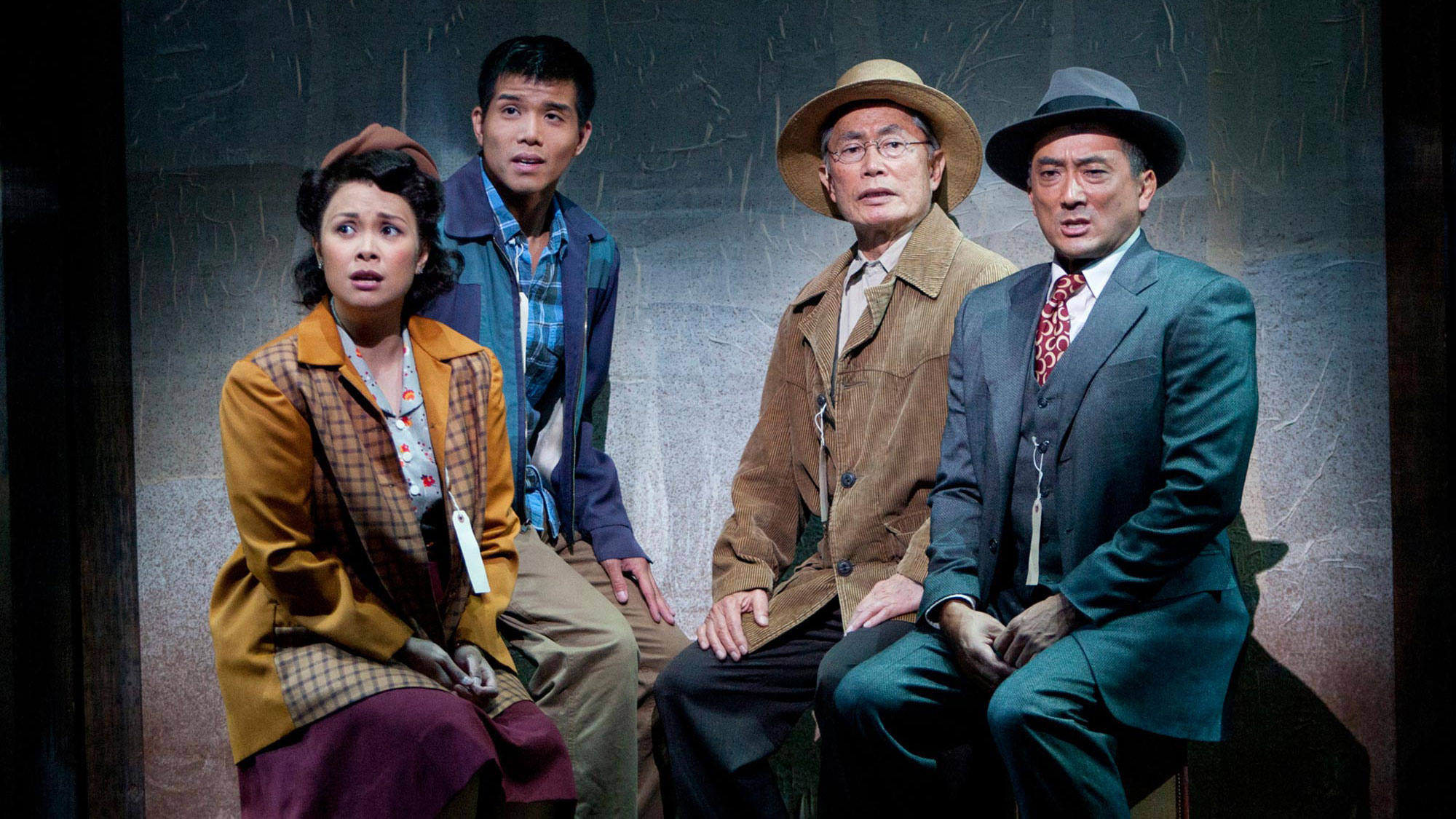
10. See: Allegiance.
George Takei wrote the musical Allegiance alongside composer Jay Kuo and writer Lorenzo Thione, based on his family’s experience of spending four years in an internment camp in Arkansas. With song — and, yes, a little dance — the musical tells the story of two siblings, one desperate to prove his patriotism to the United States and one hostile to the country holding the family in a camp. The musical premiered at the Old Globe Theater in San Diego in late 2012, and its producers are hoping it will make its Broadway debut by 2015.

















